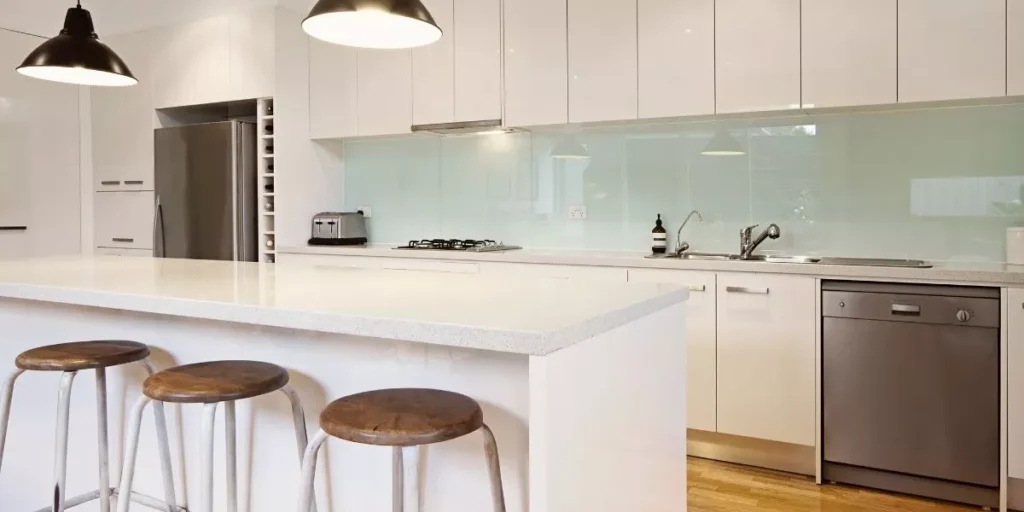
When you step into a contemporary kitchen, the lighting you choose can make all the difference. Imagine a space where every corner is illuminated with purpose and elegance. The right lighting not only serves a functional role but also sets the mood and enhances the overall design. How can the interplay of light and shadow transform your kitchen into a modern culinary haven? Explore the nuanced world of lighting design in today’s kitchens to uncover the secrets behind creating a truly captivating culinary space.
Importance of Lighting in Kitchen Design
Effective lighting is crucial in kitchen design to ensure functionality and create a pleasant ambiance. When planning the lighting for your kitchen, consider both the practical aspects and the aesthetic appeal. Adequate lighting is essential for performing tasks such as meal preparation, cooking, and cleaning. Insufficient lighting can lead to accidents and make these activities more challenging. On the other hand, a well-lit kitchen not only enhances safety but also contributes to the overall atmosphere of the space.
In addition to functionality, lighting plays a significant role in highlighting the design elements of your kitchen. Properly placed lights can showcase your countertops, cabinetry, and other features, adding depth and visual interest to the room. Moreover, the right lighting can create a cozy and inviting environment, making your kitchen a more enjoyable place to spend time with family and friends.
Types of Lighting Fixtures for Kitchens
When considering the lighting for your kitchen, exploring various types of lighting fixtures can greatly enhance both the functionality and aesthetic appeal of the space.
Pendant lights are popular choices that hang from the ceiling and provide focused illumination over specific areas like kitchen islands or dining tables.
Under cabinet lighting is another practical option that helps illuminate countertops for easier food preparation.
Recessed lighting, also known as can lights, offers a sleek and modern look by being installed into the ceiling, providing overall ambient lighting.
Track lighting fixtures are versatile and allow you to direct light to different areas of the kitchen as needed.
Chandeliers can add a touch of elegance and serve as a focal point in larger kitchen spaces. Additionally, wall sconces can contribute to the overall lighting scheme while adding a decorative element to the walls.
Strategic Placement for Maximum Impact
For maximum impact in your kitchen lighting design, consider strategically placing different types of fixtures to optimize both functionality and aesthetics. Start by incorporating overhead ambient lighting to illuminate the entire space evenly.
Pendant lights above the kitchen island or dining area can create a focal point while providing task lighting. Under-cabinet lights offer direct illumination for food preparation areas, enhancing visibility and reducing shadows.
Placing recessed lights along the perimeter of the room can help eliminate dark corners and provide overall brightness.
To highlight specific features like artwork or architectural elements, use adjustable track lighting or wall sconces. For a cozy ambiance, install dimmer switches to control the intensity of the light.
Consider placing lights above or below open shelving to showcase decorative items or glassware. Additionally, incorporating lighting inside glass-front cabinets can add depth to the space.
Balancing Style and Functionality
To achieve a harmonious kitchen lighting design, carefully balance the style and functionality of your fixtures to enhance both the visual appeal and practicality of the space. When selecting lighting fixtures, consider how they contribute to the overall aesthetic of your kitchen. Opt for fixtures that not only provide adequate illumination but also complement the design theme you have chosen. For example, sleek pendant lights can add a modern touch to a contemporary kitchen, while vintage-inspired sconces can enhance a more traditional look.
However, style shouldn’t come at the expense of functionality. Ensure that your lighting choices meet the specific needs of your kitchen activities. Task lighting, such as under cabinet lights or track lighting, can illuminate work surfaces for meal preparation, cooking, and cleaning. Additionally, ambient lighting, like recessed lights or chandeliers, can create a warm and inviting atmosphere for dining and entertaining.
Kitchen Appliances














